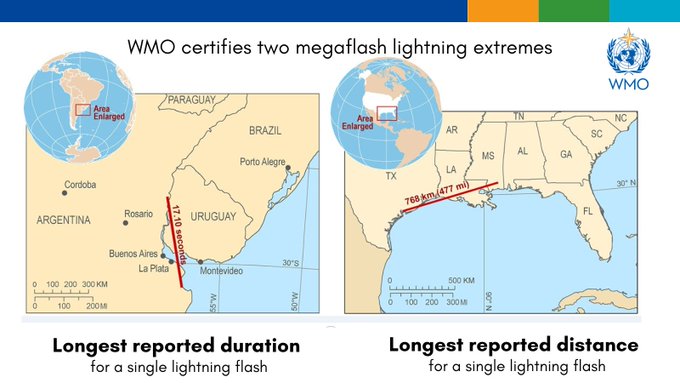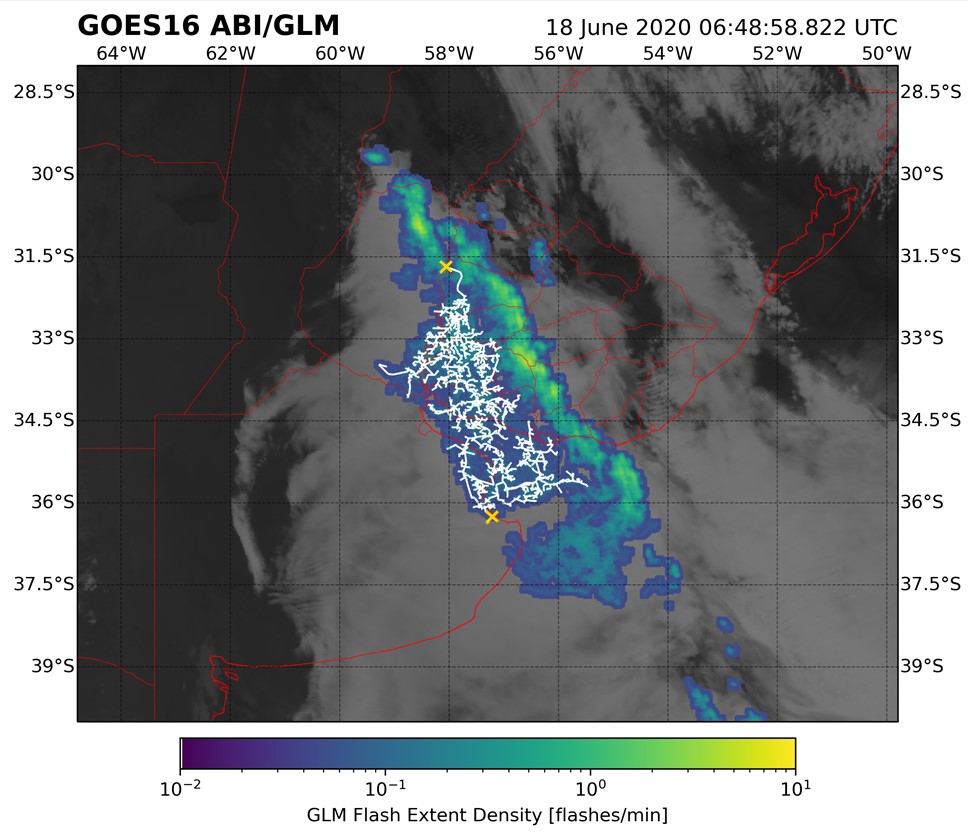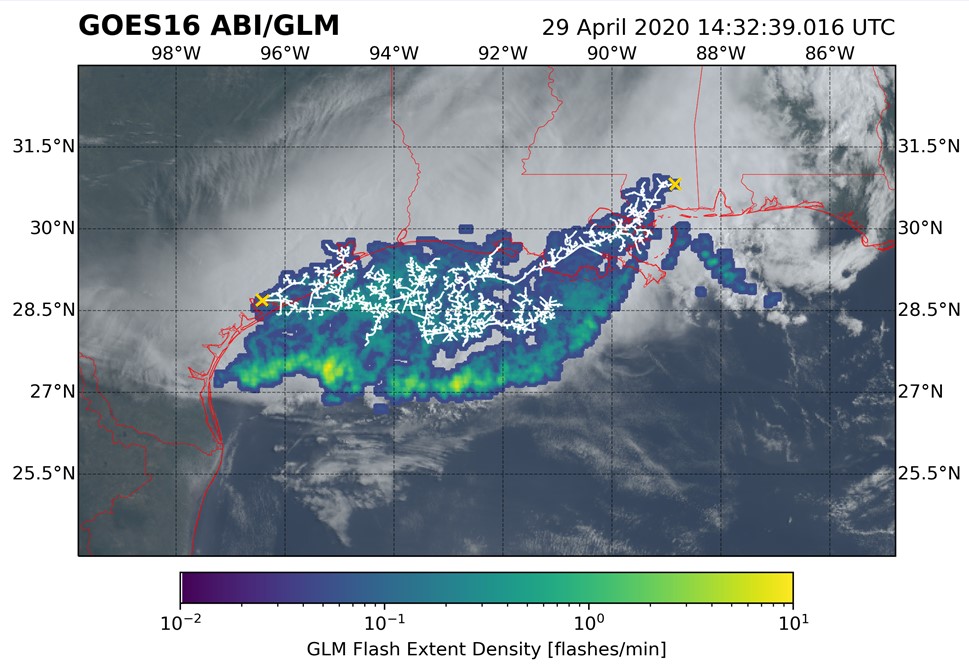New lightning world records confirmed by WMO
A single lightning flash lasting more than 17 seconds and another that travelled over 760 km have just been confirmed as new world records.
The two monstrous lightning strikes, known as megaflashes, were detected by space-based instruments in 2020 and have this week been confirmed as new world records by the World Meteorological Organization’s Committee on Weather and Climate Extremes.

Image: New longest duration and longest distance lightning flash records confirmed by the WMO. Source: WMO
Longest duration
The longest duration megaflash occurred in South America, above northern Argentina and Uruguay, on 18 June 2020. This single lightning flash lasted for an astonishing 17.1 seconds (17.102 ± 0.002 seconds to be exact). For perspective, it takes Usain Bolt 19.19 seconds to run 200 metres.

Image: Satellite image of the megaflash over Uruguay and northern Argentina on 18 June 2020. The white lines show the lightning’s horizontal structure and the gold ‘x’ symbols show the maximum extent of this megaflash. Source: NOAA/WMO
Longest distance
The longest distance megaflash was recorded over the southern United States on 29 April 2020. This huge lightning flash extended 768 km (± 8km) between Texas and Mississippi. If this lightning had originated above Sydney in Australia, it would have reached beyond Melbourne.

Image: Satellite image of the megaflash over the southern United States on 29 April 2020. The white lines show the lightning’s horizontal structure and the gold ‘x’ symbols show the maximum extent of this megaflash. Source: NOAA/WMO
Shocking! Within this cluster of storms, a single lightning bolt captured by @NOAASatellites in April 2020 was recently certified by the @WMO as the world’s longest flash on record with a distance of 477 miles. MORE: https://t.co/LdDQ0Avdll #Megaflash #Lightning #Weather pic.twitter.com/FzD9ShfnRR
— NOAA (@NOAA) February 1, 2022
What causes a megaflash?
Megaflashes are a special category of lightning that can’t be produced by your garden variety thunderstorm. According to the researchers that assess megaflash records for the WMO, these chart-topping lightning strikes are only observed in huge thunderstorm complexes known as Mesoscale Convective Systems (MCSs). These massive storm complexes can produce megaflashes because they have “expansive electrified clouds that discharge at sufficiently low rates to facilitate single horizontal flashes spanning extraordinary distances.”
The two record-breaking lightning megaflashes from 2020 were indeed detected within MCSs, using a special lightning detection sensor called a Geostationary Lightning Mapper (GLM), which was attached to the GOES-16 satellite.
GLMs are a relatively new technology that allows satellites to monitor lightning flash extent and duration continuously over a large area of the Earth’s surface. Given their relative infancy in the field of lightning detection, there’s a good chance that GLMs will continue to detect even longer megaflashes in the coming years as they scan more of our planet’s atmosphere.